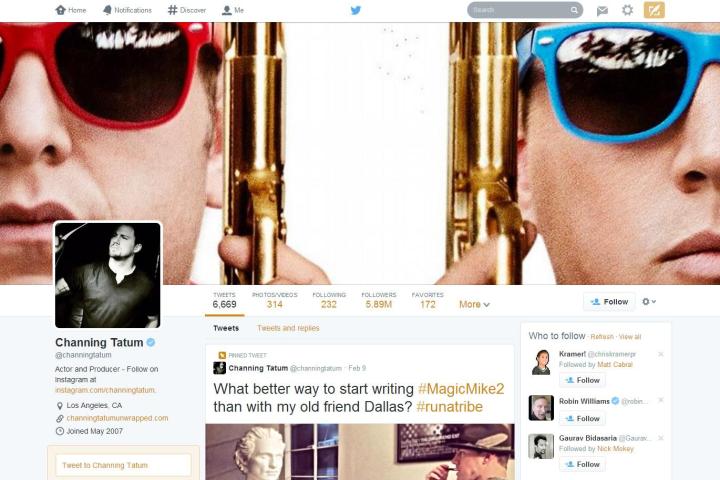
Announced on the official Twitter blog earlier today, the social network has started to gradually launch a new design for user profiles that brings a greater focus to banner images and user profile pictures as well as photos and video within the actual Twitter feed. Applying only to the desktop version of the site for now, the new design is immediately available to new users or users that set up an account within the past few months. All current users will be offered a chance to switch over to the new design in the coming weeks.
In addition to the heavy push towards visual elements, Twitter has included three new features that will alter how you consume information in the feed. The ‘Best Tweets’ feature will highlight tweets that receive significant engagement. For instance, when a tweet receives tons of retweets and replies, the font of the tweet will increase significantly. On celebrity pages, this seems to be most prevalent on posts that include popular images.

The ‘Pinned Tweet’ feature will work identically the pinning function on Facebook pages. If you want to feature a specific tweet at the top of your feed for a longer period of time, you can pin it at the top of the feed. This will be particularly useful for businesses and brands as social media managers can highlight specific promotions for a greater period of time. Of course, users will have to visit the Web version of Twitter in order to see the pinned post.
The ‘Filtered Tweets’ feature will allow you to alter which tweets are visible when perusing other profiles. Rather than just the most recent tweets, users can view only tweets that include photos or video as well as tweets that received replies. Representatives at Twitter haven’t indicated when or if these changes will appear on the mobile version of the social network. Interestingly, the vast majority of Twitter users are accessing the service through mobile devices. In addition, nearly half of all mobile Twitter users are less likely to use the desktop version of the site.
Editors' Recommendations
- How to create multiple profiles on a Facebook account
- Your Facebook account could get multiple profiles for different interests
- Facebook is paying some users to suspend their accounts before the 2020 election
- Facebook starts merging Instagram, Messenger chat features on iOS, Android
- Facebook, Google, Microsoft, and Twitter team up to fight election interference


